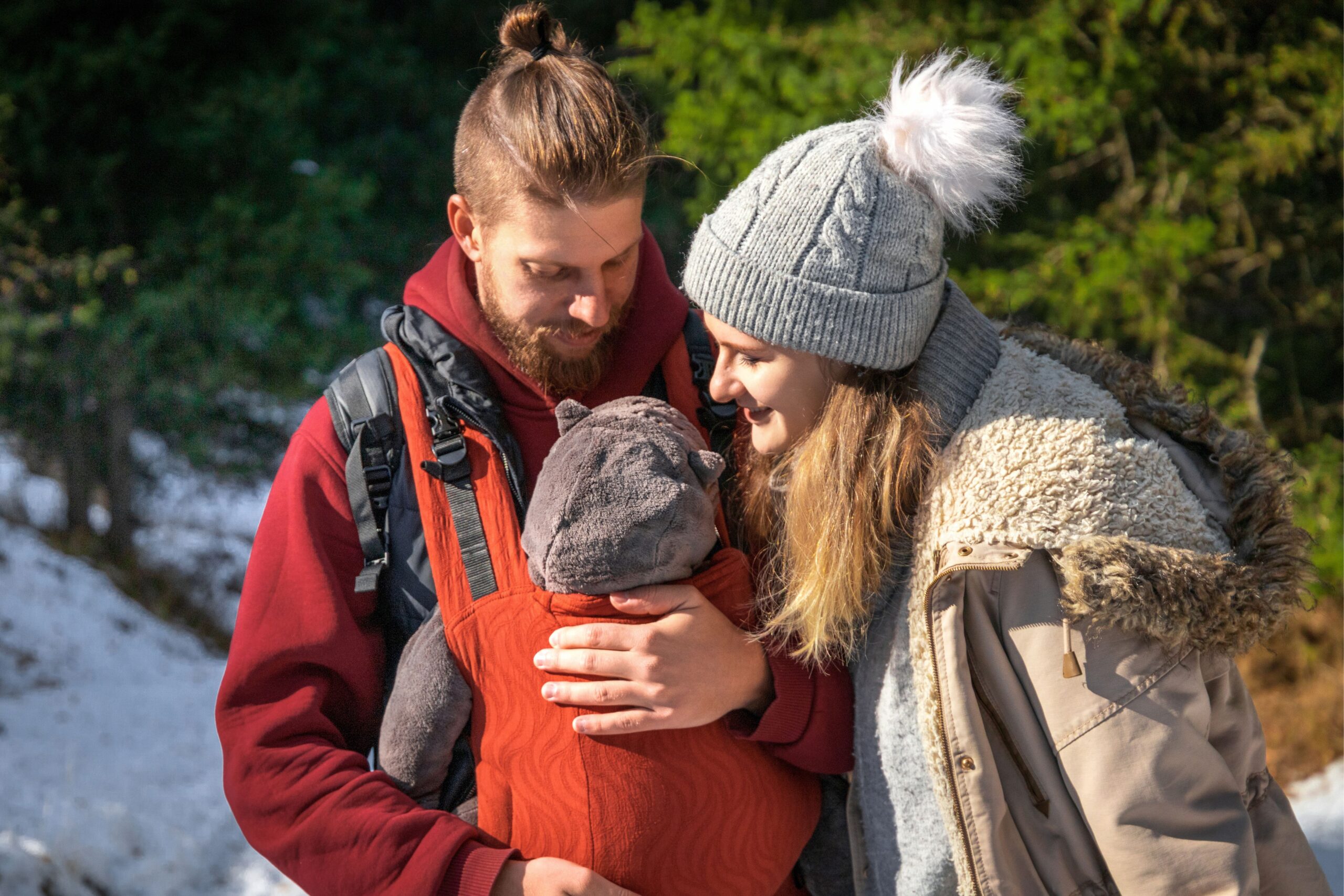Babywearing is a practice that involves carrying your baby close to your body using a baby carrier, wrap, or sling. This method not only promotes bonding but also allows parents to engage in various activities while keeping their little ones close. One such activity is babywearing hiking, which combines the benefits of babywearing with the joys of exploring nature. In this blog, we’ll discuss tips for successful babywearing hiking and the benefits it offers.
Benefits of Babywearing Hiking
Babywearing hiking provides numerous advantages for both parents and babies:
- Promotes bonding: Babywearing keeps your baby close, fostering a strong emotional connection and a sense of security.
- Encourages physical activity: Hiking is a great way for parents to stay active and maintain a healthy lifestyle.
- Exposes babies to nature: Exploring the great outdoors can stimulate your baby’s senses and support their cognitive development.
- Boosts mental health: Spending time in nature has been shown to reduce stress, improve mood, and increase overall well-being for both parents and babies.
- Fosters social interaction: Hiking with other babywearing families can help build a sense of community and provide opportunities for shared learning and experiences.
- Builds positive parent-child bonds: Hiking is a great way to connect with your baby and spend quality time together.
- Encourages problem solving: Hiking with a baby requires creative thinking as parents figure out how best to carry their child while still enjoying nature.
Tips for Successful Babywearing Hiking
1. Choose the Right Carrier
Select a baby carrier that is comfortable, supportive, and appropriate for your baby’s age and weight. Some popular options include:
- Soft-structured carriers: These carriers provide support and structure with padded shoulder straps and a waist belt.
- Wraps: Made of long pieces of fabric, wraps can be tied in various ways to accommodate different carrying positions.
- Slings: These carriers consist of a loop of fabric that can be worn over one shoulder, creating a pouch for your baby.
2. Dress Appropriately
Dress both yourself and your baby in layers to accommodate changing weather conditions. Opt for moisture-wicking fabrics to stay dry and comfortable. Don’t forget sun protection, such as hats and sunscreen.
3. Plan Your Route
Choose a hiking trail suitable for your fitness level and your baby’s age. Start with shorter, easier hikes and gradually increase the difficulty as you both become more comfortable with babywearing hiking.
4. Pack Essentials
Bring a well-stocked diaper bag with essentials such as diapers, wipes, a changing pad, extra clothes, snacks, and water. Don’t forget a first aid kit and a fully charged cell phone for emergencies.
5. Practice Safety
Ensure your baby is securely positioned in the carrier, with their airway clear and their body well-supported. Follow the carrier manufacturer’s guidelines for proper usage. Always keep an eye on your baby’s comfort and well-being during the hike.
If your baby gets tired, stop and rest. If they are fussing or crying, try changing their position in the carrier, give them a snack or drink of water and continue on your hike.
6. Take Breaks
Bring along a stroller for use at the beginning of the hike when you may need to take frequent breaks due to fatigue or soreness from carrying your child for long periods of time.
You may want to use a stroller for the first few miles and then switch back to carrying your child, especially if you have more than one child in tow.
7. Wear Proper Footwear
Hiking boots are not necessary for most hikes with babies, but you should wear proper footwear that provides traction on slippery surfaces.
8. Keep Your Child Hydrated
Bring along plenty of water for both you and your child. You may need to stop every 20 minutes or so to give them a drink, especially if they are not old enough yet to hold their own bottle or sippy cup.
9. Pack Snacks
Bring along some snacks for your child, especially if you will be hiking for longer than an hour or two.
10. Watch Out For Wildlife
If you are hiking in a more rural area, be sure to keep an eye out for wildlife like snakes and bears that may be lurking in the brush.
FAQs
1. At what age can I start babywearing hiking with my baby?
You can start babywearing hiking once your baby has sufficient head and neck control, typically around 3-4 months of age. However, consult your pediatrician before embarking on any new physical activities with your baby.
2. How can I make sure my baby is comfortable during the hike?
Regularly check on your baby’s comfort, including their body temperature, positioning, and overall well-being. Adjust their clothing and carrier as needed, and take breaks if necessary.
3. What if my baby gets fussy during the hike?
If your baby becomes fussy, take a break to address their needs. This might involve feeding, changing their diaper, or simply providing some cuddles and reassurance.
4. Can I babywear while hiking during hot weather?
Yes, but take extra precautions to keep your baby cool and hydrated. Dress them in lightweight, breathable clothing, and provide shade with a hat or canopy. Take frequent breaks in shaded areas and offer water if your baby is old enough to drink it.
5. Can I nurse my baby while babywearing during a hike?
Many baby carriers and wraps allow for discreet and comfortable nursing while babywearing. Practice nursing in your carrier at home before attempting it on the trail.
Author
-


Dr. Sajid is a highly respected and experienced pediatrician who specializes in treating children of all ages. With a background in medicine and a passion for working with kids, Dr. Sajid has dedicated his career to helping young patients lead healthy and happy lives. He is particularly skilled in treating common childhood illnesses and developmental issues, such as allergies, asthma, and behavioral problems. Dr. Sajid is known for his gentle and compassionate approach to working with kids, and he is committed to making each visit to the doctor a positive and comfortable experience for his patients. His expertise in the field of pediatrics, combined with his warm and caring demeanor, make Dr. Sajid an excellent choice for families in need of a trustworthy and skilled kids doctor.
Drsajid@gmail.com Dr Sajid

